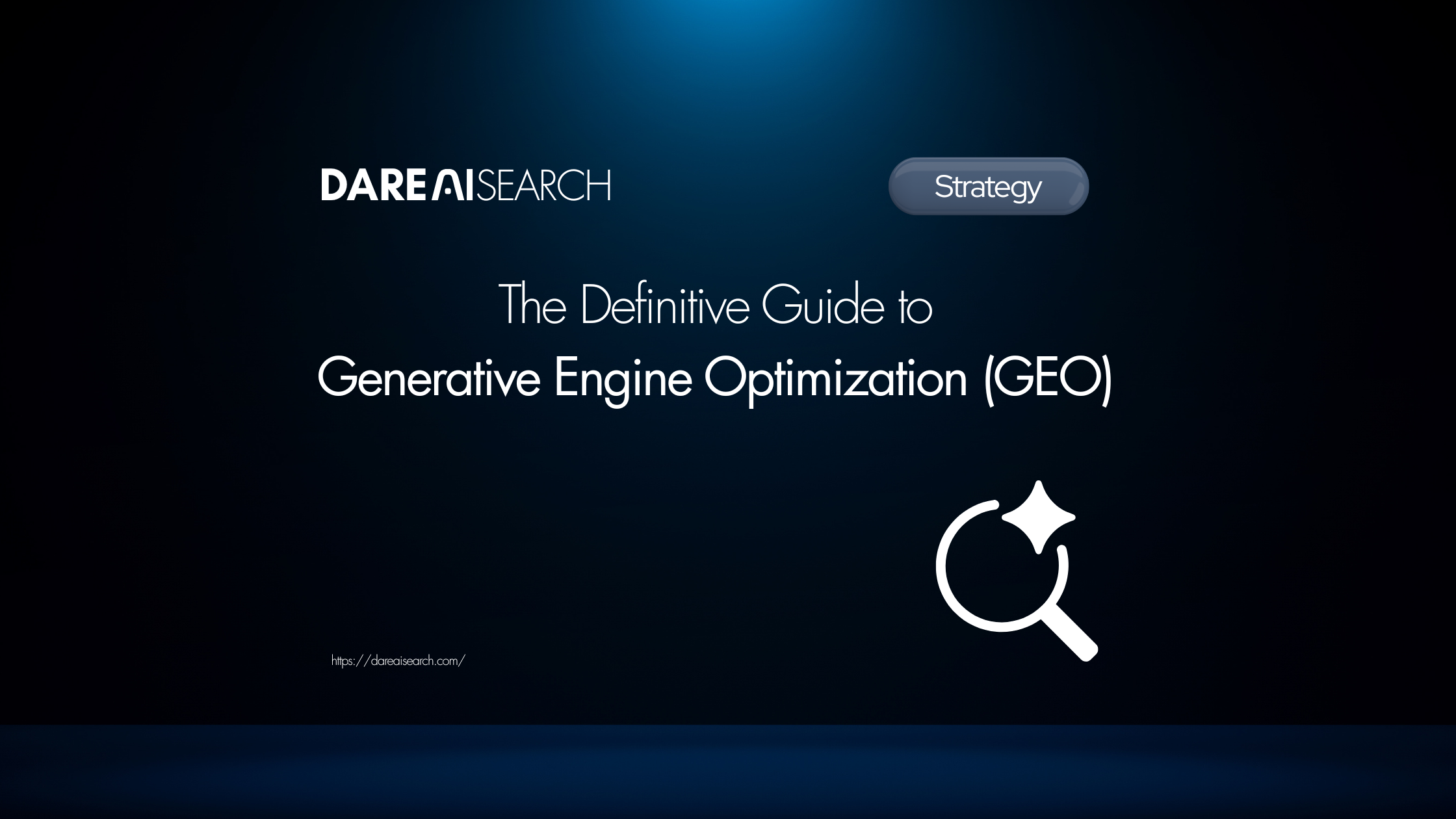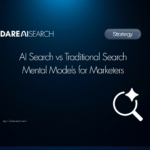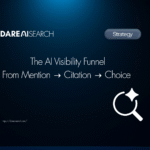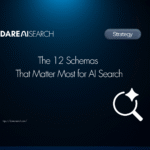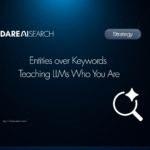Introduction: The Search Landscape Has Changed
Not too long ago, every marketer obsessed over page one of Google. Ranking there meant traffic, visibility, and sales.
But 2025 looks very different.
- 30% of organic traffic is already being absorbed by AI search engines like ChatGPT, Perplexity, Gemini, and Copilot.
- 58% of searches end with zero clicks, because the answer is generated directly.
- Brands are now competing not for blue links, but for citations inside AI answers.
This shift demands a new playbook: Generative Engine Optimization (GEO).
In this guide, we’ll break down what GEO is, how it works, and how your brand can stay discoverable when customers turn to AI for answers.
What is Generative Engine Optimization (GEO)?
Generative Engine Optimization is the practice of optimizing your brand to be cited, recommended, and chosen in AI-generated answers.
It’s not about keywords or backlinks alone, it’s about ensuring AI engines trust your brand’s facts, data, and authority enough to use you in natural language answers.
Think of it as the evolution of SEO:
- SEO: “How do I rank higher on Google’s results page?”
- GEO: “How do I make sure AI search engines mention, cite, and recommend my brand in their answers?”
For example:
- Old SEO: Ranking your skincare blog for “best sunscreen for oily skin.”
- GEO: Making sure ChatGPT or Perplexity says “Brand X’s sunscreen is dermatologist-approved and a top choice for oily skin.”
How AI Search Engines Work (and Why It Matters)
Traditional search engines crawl, index, and rank. AI engines operate differently:
- They synthesize answers by pulling from trusted data sources including articles, reviews, PDFs, product pages, forums.
- They’re looking for clear, structured facts they can confidently present.
- Authority and trust signals matter even more: Who you are and how consistent your data is directly influence visibility.
In other words: if your brand data is scattered, inconsistent, or buried, AI engines won’t find or cite you.
The GEO Framework: The AI Visibility Funnel
At DareAISearch, we map AI search visibility into a four-stage funnel:
- Mention → Your brand name appears in an AI-generated answer.
- Citation → Your content is linked or referenced as a source.
- Recommendation → AI actively recommends your product/service as a top choice.
- Choice → You’re positioned as the preferred solution.
Most brands today are stuck at Stage 1 (Mention). GEO is about climbing higher, until AI engines recommend and choose you.
Why GEO is a 2025 Priority
Marketers can’t afford to wait. Here’s why:
- Traffic Shift: A growing share of discovery happens inside AI search, not Google.
- Revenue Risk: If AI answers exclude you, customers won’t even know you exist.
- First-Mover Advantage: Early GEO adopters will own more citations and lock competitors out.
- Defensive Play: Preventing AI hallucinations or misattribution of your brand facts.
Ignoring GEO today is like ignoring SEO in 2005, the opportunity cost is massive.
GEO in Action: What Brands Should Do Now
Here are practical steps you can start today:
1. Audit Your “Answerability”
- Are your facts, products, and claims clear and structured?
- Could AI engines easily summarize your content into a precise, factual sentence?
2. Implement Schema Markup
- Prioritize FAQ, Product, HowTo, Organization, Local Business schemas.
- Think of schema as the “dictionary” that teaches AI engines how to read your brand.
3. Create Prompt-Ready Content
- Use Q → Claim → Evidence → Citation blocks.
- Example:
- Q: “Is Brand X sunscreen safe for oily skin?”
- Claim: “Yes, it is dermatologist-tested for oily skin types.”
- Evidence: Clinical study or certification.
- Citation: Link to the source page.
4. Monitor Across AI Engines
- Don’t just track Google rankings.
- Test your visibility across ChatGPT, Perplexity, Gemini, Copilot.
- Benchmark how often your brand is mentioned vs cited vs recommended.
Why we built DareAISeach?
GEO can’t be solved with manual tweaks alone.
- You need analytics to see where your brand stands.
- Intelligence to know which prompts/concepts matter.
- Execution to push structured data and optimized content fast.
That’s exactly why we built DareAISearch, an Operating System for AI Search Visibility.
It helps brands move from being mentioned → cited → recommended → chosen.
Actionable Takeaways
- GEO is the evolution of SEO, optimize not just for rankings, but for citations in AI answers.
- Treat your brand like a source of truth: schemas, consistent facts, prompt-ready content.
- Track visibility across multiple AI engines, not just Google.
- Adopt frameworks like the AI Visibility Funnel to measure progress.
- Use specialized platforms like DareAISearch to operationalize GEO at scale.
FAQs
GEO is the practice of optimizing your brand for visibility inside AI-generated answers, ensuring your data is cited and recommended by AI search engines like ChatGPT and Perplexity.
SEO focuses on rankings in search engines like Google; GEO focuses on making AI engines trust, cite, and recommend your brand inside natural language responses.
Because AI search is already taking a large share of traffic, and brands without GEO strategies risk losing discoverability and revenue.
Start with an Answerability Audit, check if your content can be summarized into clear, verifiable facts for AI engines.
DareAISearch combines analytics, intelligence, and execution tools into one platform, helping brands move from being mentioned to being chosen inside AI-generated answers.

